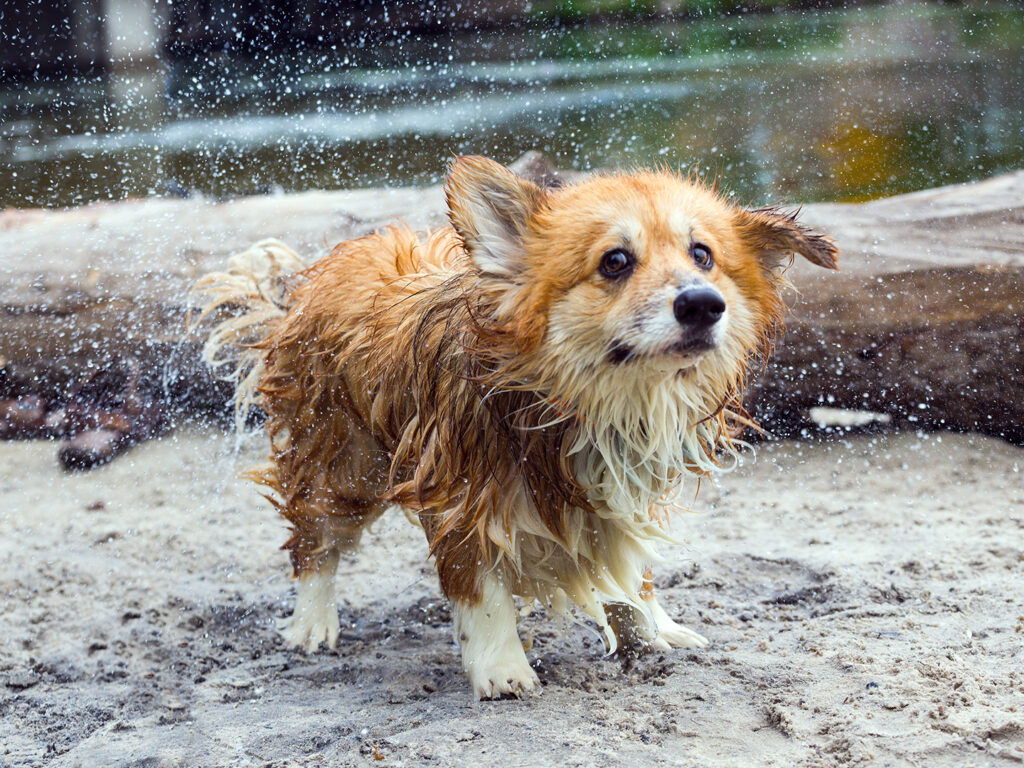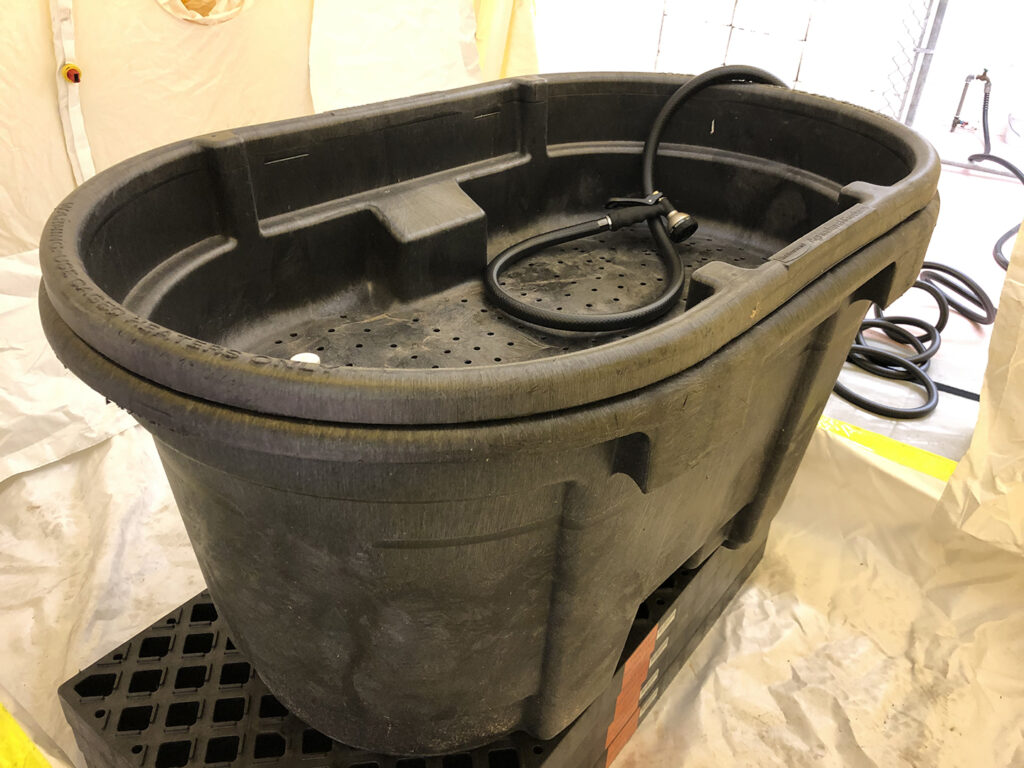Texas A&M Veterinary Emergency Team Develops New Decontamination Guidelines For Dogs
Story by Courtney Price, VMBS Communications

The Texas A&M School of Veterinary Medicine & Biomedical Sciences’ (VMBS) Veterinary Emergency Team (VET) has developed protocols for decontaminating dogs after disaster events.
The new guidelines, soon to be published in the journal Disaster Medicine and Public Health Preparedness, will help disaster management teams across the country know the kinds and quantities of resources needed to clean external contaminants, such as toxic chemicals, off companion animals.
The guidelines also offer instructions for how to set up decontamination (decon) stations and clean animals effectively with special bathing techniques.
As the largest emergency response team specializing in veterinary care in the United States, the VET is uniquely qualified to help communities plan for disasters.
“Every kind of disaster, whether it’s a tornado or an explosion at an industrial facility, has its own challenges,” said Dr. Debra Zoran, a professor in the VMBS’ Department of Small Animal Clinical Sciences and the VET’s interim director. “But one thing that most have in common is exposing people and animals to harmful substances that can cause health problems.
“They might just be skin irritants or they could end up being cancer-causing agents. Even a natural disaster like a flood can end up spreading sewage water and all of the toxic things it contains throughout the environment for people and animals to encounter,” she said.
The key to avoiding lasting repercussions from chemical hazards is decontamination, the process of removing toxic substances on the outside of an individual’s body.
“The goal of this project was to provide community emergency planners with numbers that would help them quantify things like how much soap to buy, how much water to allocate, and how many volunteers it takes to decontaminate dogs,” Zoran said. “We hope this will encourage more communities to include animal decontamination in their disaster planning.”
Leading Disaster Response
Having been all over the country with the VET, Zoran knows firsthand just how important decontamination is for protecting both people and animals.
She’s also seen that while many communities have plans in place for human decontamination, they don’t always plan for companion animals, which can be dangerous for the community.
“People often bring their pets with them to emergency shelters,” Zoran said. “They don’t want to, and shouldn’t, leave them behind. But then the owners are in close proximity to animals that may still have toxic chemicals on their fur, which can lead to recontamination for the person and continual exposure to the contaminants for the animal.”
Including animals in decon planning thus ensures that both animals and people are properly decontaminated — and that they stay that way. However, it’s easy for communities to be caught off guard by the number of animals that show up with their owners.
“During one disaster deployment, we were doing 40 to 50 animal decons a day,” Zoran said. “It’s a lot of work, but it’s crucial for the well-being of these animals and the people who care for them that we include them in emergency plans.”
The Decon Process

To help make animal decontamination as affordable and efficient as possible, Zoran and her team developed a streamlined system for decontaminating dogs that takes an average of 10 to 15 minutes to complete.
“We tested our system on medium-size dogs with medium-length coats and found that a line of volunteers can decon about four or five dogs an hour,” she said. “You’ll need about 12 to 15 gallons of water per dog and other equipment, like towels, hoses and protective gear for the volunteers.”
Zoran and her team also devised a washing station using large plastic tubs with holes drilled in the bottom that allows water to drain out into a large trough for disposal.
“We purposefully chose tubs that are easy to find at places like feed and hardware stores so that any community can replicate our process,” she said. “If you place the tubs in a large trough that’s connected to a bladder or drainage system, then the volunteers won’t be at risk from standing in contaminated water.”
For soap, the research team compared liquid dish soap with oil-removing properties and an antibacterial soap to see which would lather better.
“There may be situations where using an antibacterial soap is important,” Zoran said. “However, they don’t tend to lather as well, so we wanted to test one and see if it could decon as well as the dish soap. We found that dish soap is still the better option for removing oily substances in most settings.”
To simulate oil-based contaminants, which are common in disasters, the team applied Glo-Germ to the dogs’ coats before bathing.
“Glo-Germ is an oil-based lotion that’s frequently used in veterinary and medical schools to test cleaning procedures,” Zoran said. “It glows under ultraviolet light, which makes it easy to tell if you’re cleaning properly.”
Adapting To The Circumstances
The research team ultimately designed the guidelines based on data from well-behaved dogs that were used to bathing, which means that the time decon takes may vary in a real emergency.
“All of the dogs we used to test the process were about the same size and had calm temperaments,” Zoran said. “If you’re decontaminating a dog with a long coat, or one that’s very stressed, it may take longer and use more water, so emergency planners should keep that in mind.”
In the future, Zoran and her research collaborators hope to get more precise information about decon for a greater variety of dogs, as well as other common pets like cats.
“The more information that people have, the better prepared they can be in case of a disaster,” she said. “You don’t want to wait until one happens to figure out what to do.”
###
For more information about the Texas A&M School of Veterinary Medicine & Biomedical Sciences, please visit our website at vetmed.tamu.edu or join us on Facebook, Instagram, and Twitter.
Contact Information: Jennifer Gauntt, Director of VMBS Communications, Texas A&M School of Veterinary Medicine & Biomedical Sciences, jgauntt@cvm.tamu.edu, 979-862-4216


